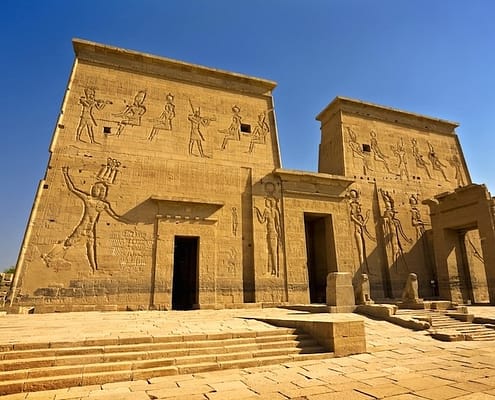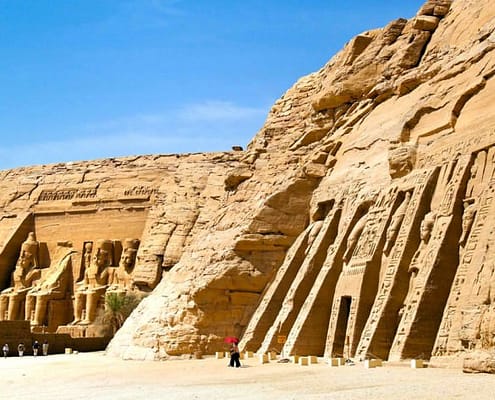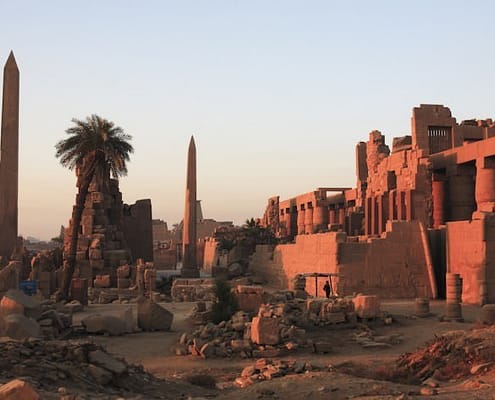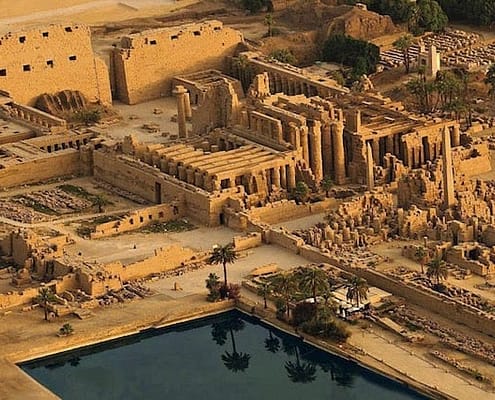What To See In Egypt?
What to see in Egypt? This is a question which countless people ask, not because they are unaware of Egypt’s many fascinating attractions, but because there are just so many things to see in the country. Egypt is quite often referred to as the Cradle of Human Civilization because the region has been home to so many ancient civilizations through its long and colorful past, and their presence can still be seen.
What sets Egypt apart from the rest of the world is the fact that each great civilization has left its mark in the form ancient relics; artifacts and monuments. Collectively, these provide us with an incredibly accurate record of the country’s history. When you travel to Egypt, you come face to face with more than 5,000 years of history, which to this day has been extremely well preserved. No other country in the world can offer visitors a comparable experience.
What to See In Egypt – The Ancient Pyramids and the Sphinx
The Great Pyramids of Giza and the Sphinx are undeniably Egypt’s most famous attractions. They are also the most visited attractions in the country, drawing thousands of tourists to the Giza necropolis each day. If you are planning to visit the country and you’re making a list of what to see in Egypt, then you will definitely want to put this site at the very top of your “Must See” list. The fact that the site is located just a short drive away from central Cairo only gives you more reason to explore these ancient wonders.
The Giza pyramids were built over the span of 3 generations. The first one was constructed for Pharaoh Khufu. This is the tallest of the three great pyramids, reaching an impressive 138 meters into the sky, making it the largest pyramid ever discovered. The second pyramid was constructed for Pharaoh Khafre, and the third for Pharaoh Menkaure.
NOTE: When you visit the site, you might find that the Pyramid of Khufu is closed to the public for the sake of preservation. Also, when it is open, there are restrictions on the number of people allowed in. Currently, the authorities only allow 150 visitors inside in the mornings and another 150 visitors in the afternoons. You also have to purchase a special ticket on-site, and in person because tour operators are no longer allowed to book for group tours. If you want to get a ticket to enter this pyramid, you need to be at the ticket office early. Lastly, remember that the pharaohs never built their pyramids for entertaining guests, so don’t expect the interior design to be very visitor friendly.
Located just in front of the three pyramids is the great Sphinx, a lion-like sculpture with a human head that was carved out of a single block of sandstone. The world-famous Sphinx is known as Abu al-Hol in Arabic, which basically means “Father of Terror”. When visiting the site, you will also be able to explore the Valley Temple which stands just a short distance away, facing the pyramids and the Sphinx.
The Great Pyramids of Giza were constructed in the 4th dynasty of Egypt’s Old Kingdom, about 5000 years ago. How exactly the ancient architects and laborers were able to construct these massive pyramids is still somewhat of a mystery, and contrary to popular belief, slave labor was never used during their construction.
Djoser’s Step Pyramid – Saqqara, South of Cairo
Once the largest building of its time, and also Egypt’s very oldest pyramid, Djoser’s Step Pyramid was constructed for to hold Pharaoh Djoser’s mummified body. It was built in the Saqqara necropolis just 30 km south of Cairo, near Memphis, the ancient capital of Egypt.
At the time of its completion in 2611 BC, the pyramid stood 62 meters high and had six stepped layers. It was designed by the famous ancient architect Imhotep, and may have been one of the first stone buildings of its time. Tourists and pilgrims have been visiting Djoser’s Step Pyramid for more than 3000 years now.
The Saqqara necropolis is a vast ancient burial ground, and home to several other pyramids and temples which you can visit and explore while you are in the area. Saqqara sits on the edge of the desert, overlooking the Nile River valley, but it is surrounded by lush greenery that gives it a unique sort of charm.
Visitors will feel as though they have traveled back in time to see how the region appeared many millennia ago. These days, there is also a small modern museum which is definitely worth visiting. Simply put, this fascinating site should also feature on your “what to see in Egypt” list.
The Egyptian Museum in Cairo
If you are fascinated by the ancient pyramids, temples and tombs of Egypt, then the Egyptian Museum in Cairo needs to be added to your “Must See” list as a matter of urgency. The museum houses more than 120,000 artifacts but for obvious reasons, not all of these are on display.
The Museum is also home to the “Treasures Room” which holds the treasures and artifacts that were recovered from the tomb of the boy king, Tutankhamen. This, along with the “Mummies Room” is for many people, the highlight of a visit to the museum.
There are many mummies in storage at the museum but not all of them are on display. Nonetheless, visitors can still see 11 mummies on display if they purchase a ” Mummies Room” ticket at the museum when they visit.
Some visitors have complained about having to purchase a separate ticket, but one should keep in mind that it costs the museum a considerable amount of money to display the mummies because they need to be kept in specially made displays where temperature and humidity can be carefully monitored and controlled.
The Valley of the Kings – Luxor
This historically significant valley is located near Luxor. The famous Valley of the Kings is host to 63 royal tombs and chambers for the kings and privileged nobles of the New Kingdom. These tombs and chambers were constructed during a 500 year period, beginning in the 16th century BC and continuing to the 11th century BC. The chambers and tombs range dramatically in size, from tiny pit chambers to full sized chambers that contain more than 120 different rooms.
Here visitors can see some of the most famous tombs every discovered, including the tomb of Tutankhamen. In life, Tutankhamen was one of the least esteemed pharaohs, but in death he became the most famous of them all. Today, Tutankhamen’s mummy once again rests in his timeless tomb inside a specially designed glass box. This alone should be reason enough for anyone to add this site to their “what to see in Egypt” list.
His tomb is one of the best preserved tombs, and visitors may once again enter his tomb by purchasing a separate ticket on site.
Sadly, many of these tombs were opened and robbed in antiquity, but the Valley of the Kings is still the ideal place to see actual tombs and monuments of the great Egyptian pharaohs and noblemen, and to view the Egyptian mythology decorations found on the walls of the tombs.
Also located nearby is the Valley of the Queens, where the queens of the New Kingdom and their children were often interred. Here visitors can see four of the queen’s tombs, including the famous tomb of Queen Nefertari.
Karnak Temple Complex – Luxor
The Temple of Karnak is not only one of Egypt’s most impressive ancient religious sites, but it is also the biggest such site ever discovered. Although the site has been badly ruined, it is still the largest ancient religious site, designed and constructed by generations of ancient Egyptian builders.
The Karnak temple complex is located 2.5 km north of Luxor, and it consists of 3 main temples and several smaller, outer temples along with many sanctuaries, kiosks, pylons and obelisks which collectively cover an amazing 240 acres.
The Hypostyle Hall is probably the most famous part of this ancient site, and it includes a hall that is 5000 square meters in size. Within this hall are 134 massive columns that are arranged in 16 rows. The Temple of Karnak is a very impressive feat of ancient Egyptian construction, and was supposed to be the home of the King of all Gods, Amun-Ra. In ancient times this temple was known as “Ipet-isut”, which meant the “Most Select of all Places”.
The Temple of Luxor – Luxor
The Temple of Luxor is located in the center of Luxor Town and was built more than 4000 years ago by the New Kingdom Pharaoh Amenophis III. It was then finished by Ramses II. This spectacular temple has been an important place for celebrating rituals for thousands of years, including the festival of Opet, one of ancient Egypt’s most important festivals.
Today the Temple of Luxor is a tourist hot-spot, especially at night when the entire temple is beautifully illuminated with artificial lighting.
The Temple of Isis – Philae
This breathtaking structure built to honor Isis, the Goddess of Magic, Motherhood and Fertility. When you visit this site, you will notice that there are also several other smaller temples, sanctuaries and shrines that were constructed to honor various other Gods and Goddesses, with the oldest temple dating back to the year 370 BC.
One of the most impressive things about the Philae Temple of Isis is the fact that it was moved in its entirety and then reconstructed. This was a monumental task that was carried out in order to save this ancient wonder from the rising waters of Lake Nasser when the Aswan High Dam was built. Today the temple is located on the island of Agilkia after being moved from Philae Island.
It is now a Unesco World Heritage site, and it is without question one of the best ancient attractions in Egypt. If you travel to Luxor while you are in Egypt, make sure you visit this temple, and ideally, you should try and visit it both during the day and at night so that you can experience the magnificent Philae Temple Sound and Light Show. It’s worth noting that if you intend booking a Nile River cruise, a visit to Philae Temple will almost always be included in the itinerary due to its popularity.
Temple of Horus and Sobek – Kom Ombo
The Temple and Sobek at Kom Ombo is another must-see Nile Valley attraction. Like Philae Temple, this site also features prominently in the itineraries of nearly all Nile cruise holidays. What amazes most people when they first arrive at the site is the fact that there are actually two twin temples: One built to honor Horus the falcon God of War and the sky, and the other built to honor Sobek, the God of fertility and creation.
The biggest challenge for the architect and for the builders was that both temples had to be identical so that neither of the two gods would feel offended. One had to be a mirror image of the other, and when you visit the site you soon notice that the job was completed to perfection.
This amazing achievement dating back to the early 2nd century BC is located on the banks of the River Nile, just a short distance from the tourist friendly city of Aswan. It is a well preserved temple with plenty to see. Add it to your list now so that you won’t be disappointed.
Temple of Horus – Between Aswan and Luxor
The amazing Temple of Horus in Edfu is considered to be the most well preserved ancient Egyptian temple. Constructed between 237 BC and 57 BC during the Ptolemaic Dynasty, the temple was built to honor Horus, a God that was often shown depicted as a man with the head of a falcon. In ancient Egyptian mythology, Horus eventually became the ‘supreme ruler’ and ‘god of the sky’.
The Temple of Horus is a massive structure and features a birth house, along with an impressive pylon and many fascinating reliefs and carvings. You can find this ancient wonder located at Edfu, about halfway between Aswan and Luxor along the Nile River. Like other previously mentioned attractions, it also features prominently in many Nile cruise vacations and other classic Egypt tours.
Abu Simbel – Lake Nasser
The Temples of Abu Simbel shouldn’t only be on your “what to see in Egypt” list, but instead, it should be right up there near the top of your list. No amount of words or pictures could ever be able to do this remarkable temple justice. Abu Simbel is an extremely popular historical site located on the banks of Lake Nasser in southern Egypt.
It is probably the most recognized monument of ancient Egypt, second only to the Great Pyramids of Giza. If your tour of Egypt takes you anywhere near Aswan or Lake Nasser, make certain you visit impressive structure. Abu Simbel temple actually consists of two massive rock-cut temples which were originally carved from the mountainside during the reign of Pharaoh Ramesses the Great during the 13th century BC.
These monuments pay tribute to the pharaoh himself, as well as to his wife, Queen Nefetari. Although the site had to be removed from its original foundation in the 1960’s due to the construction of the Aswan High Dam, the complete and original twin temples can still be viewed in their entirety today. Well preserved; fascinating, and one attraction you really don’t want to miss. Many Egypt package tours that feature time in Aswan will include a trip to Abu Simbel, but not all of them do so always study a tour itinerary carefully before you make a booking.
Other Things To See In Egypt?
Generally speaking, when people think about what to see in Egypt, they immediately think of the Great Pyramids of Giza and the Sphinx. Admittedly, these are Egypt’s main draw in terms of ancient attractions, but there is so much more to see in this wonderful country. Even when you have seen all the ancient wonders, you still have the mighty Sahara Desert and its many charming oases to explore. Alternatively, enjoy the magic of places like Hurghada or unforgettable Red Sea diving holidays. Relax on the coast where you can swim, dive or snorkel in crystal clear waters, or head off into the hills to visit ancient monasteries frozen in time.
If you want more information browse our Egypt Tourist Attractions section and explore sights such as:
- The awe inspiring Sahara Desert
- The early Christian sites in Egypt
- The Islamic Sites
- The museums of Egypt
- And so much more…
Breathtaking Egypt Tours
Explore the best of Egypt. Find and book your dream trip today.
Country Specific Egypt Tour Information
We have a specific international guide covering the most important points you need to be aware of before traveling to Egypt.
Last Updated on October 1, 2024














































